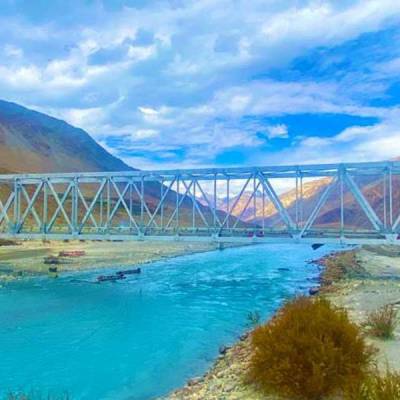

Bridge construction in extremely cold climate of Ladakh presents several challenges, including the need to withstand extreme temperatures ranging from 30 to -35 degrees, ice formation, as well as the potential for flooding, high winds, logistics and construction management issues. Also, special consideration has to be given to the materials used for the bridge as well as the design and construction methods employed.
Several challenges were faced by the execution team during the construction of Shyok Bridge in Ladakh starting from collection of hydraulic data till launching of the super structure. The use of advanced materials such as weathering steel and high-performance concrete was incorporated to ensure the structural integrity of the bridge under such harsh conditions. The construction of a bridge across the Shyok River in extreme cold climate required a thorough understanding of the unique environmental conditions and careful planning and execution to ensure the safety and durability of the structure.
The union territory of Ladakh lies at the altitudes varying from approximately 9,000 to 18,000 feet. Due to extreme weather, a small working window of 5-6 months is available to execute all projects and after that, temperature drops down up to -35 degree followed by snowfall which leads to the closure of passes and roads. The Darbuk-Shyok-Daulat Beg Oldie (D-S-DBO) road in eastern Ladakh is a strategic road which crosses the Shyok River near Shyok village.
BRO recently constructed an all-weather 120 m long, steel superstructure through type, Class 70, two span (30 m and 90 m) permanent bridge at 12,300 feet. The bridge has been constructed over the mighty river Shyok, a tributary of the Indus river that flows through northern Ladakh before entering Gilgit-Baltistan. Shyok river is also popularly known as the “river of death” because of its high current and sudden floods, and it is very difficult to ford through the river especially in summers when snow melting rate is higher…